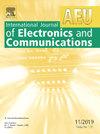Outage performance of UAV-assisted relaying MIMO-NOMA networks with SWIPT in Rician fading channels
IF 3
3区 计算机科学
Q2 ENGINEERING, ELECTRICAL & ELECTRONIC
Aeu-International Journal of Electronics and Communications
Pub Date : 2025-02-11
DOI:10.1016/j.aeue.2025.155713
引用次数: 0
Abstract
In this work, we consider unmanned aerial vehicle (UAV)-assisted simultaneous wireless information and power transfer (SWIPT)-based non-orthogonal multiple access (NOMA) system with imperfect successive interference cancellation (ipSIC) over Rician fading channels. The base station (BS) and ground users (GU) have multiple antennas applying maximal ratio transmission and maximal ratio combining diversity techniques, respectively, and communicate via a single-antenna UAV that performs amplify-and-forward relaying and power splitting (PS). Closed-form outage probability expressions are derived and validated through Monte Carlo simulations in a probabilistic path loss model. Additionally, system performance is analyzed asymptotically. Numerical results show that the optimum altitude and horizontal position of the UAV vary by urban density, and the optimum PS ratios are distinct between NOMA users. The optimum altitude for a certain urban density does not change by antenna configurations and ipSIC conditions. Adding antennas to the BS results in more performance gain than increasing antennas on the GUs. When the numbers of antennas on the BS and GUs are equal, the optimal horizontal position of the UAV is quite close to the BS; however, as the number of BS antennas increases, this position shifts closer to the GUs, a notably pronounced shift for the far user.
带SWIPT的无人机辅助中继MIMO-NOMA网络在衰落信道中的中断性能
在这项工作中,我们考虑了基于无人机(UAV)辅助的同时无线信息和电力传输(SWIPT)的非正交多址(NOMA)系统,该系统具有不完全连续干扰消除(ipSIC)。基站(BS)和地面用户(GU)分别采用最大比传输和最大比组合分集技术的多天线,并通过执行放大转发中继和功率分割(PS)的单天线无人机进行通信。在概率路径损失模型中,导出了闭式停电概率表达式,并通过蒙特卡罗模拟验证了其正确性。此外,对系统性能进行了渐近分析。数值计算结果表明,无人机的最佳高度和水平位置随城市密度的变化而变化,最佳PS比在NOMA用户之间存在差异。一定城市密度下的最佳高度不受天线配置和ipSIC条件的影响。在BS上增加天线比在GUs上增加天线能获得更多的性能增益。当基准天线数和基准天线数相等时,无人机的最优水平位置与基准天线数非常接近;然而,随着BS天线数量的增加,这个位置向GUs移动,对于远端用户来说,这是一个明显的移动。
本文章由计算机程序翻译,如有差异,请以英文原文为准。
求助全文
约1分钟内获得全文
求助全文
来源期刊
CiteScore
6.90
自引率
18.80%
发文量
292
审稿时长
4.9 months
期刊介绍:
AEÜ is an international scientific journal which publishes both original works and invited tutorials. The journal''s scope covers all aspects of theory and design of circuits, systems and devices for electronics, signal processing, and communication, including:
signal and system theory, digital signal processing
network theory and circuit design
information theory, communication theory and techniques, modulation, source and channel coding
switching theory and techniques, communication protocols
optical communications
microwave theory and techniques, radar, sonar
antennas, wave propagation
AEÜ publishes full papers and letters with very short turn around time but a high standard review process. Review cycles are typically finished within twelve weeks by application of modern electronic communication facilities.

 求助内容:
求助内容: 应助结果提醒方式:
应助结果提醒方式:


